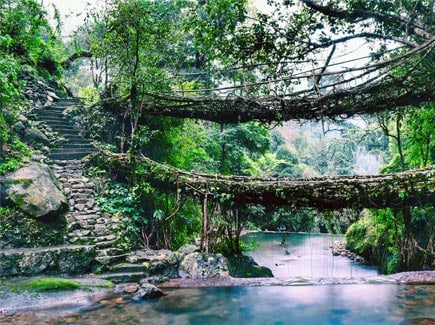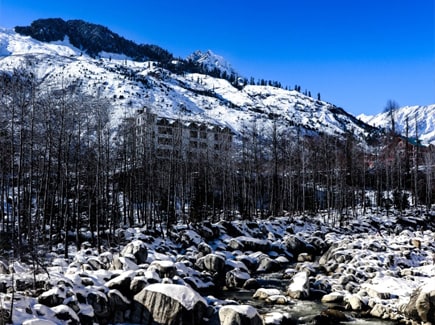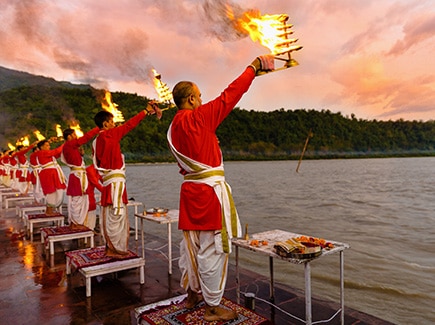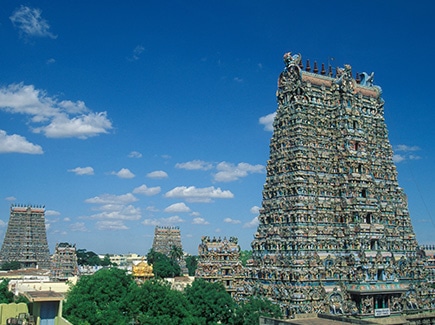Agra, one of the most popular tourist destinations in India, is renowned for being home to one the Seven Wonders of the World, the Taj Mahal. It is as loved by Indians as it is by foreigners who throng here in large numbers to admire its beauty. Agra, being one of the famous cities of Uttar Pradesh, is synonymous with the Taj Mahal. However, there’s so much more to the city than the world-famous monument alone. Right from the epic Mahabharata to the Mughal Dynasty, Agra has been monumental in its own right and has played a significant role in shaping India’s history.
Under the Mughal reign, Agra was called Akbarabad and was ruled by greats like Akbar, Jehangir, Shah Jahan, etc. All of them shared their love for architecture, gardens, art, and culture, thereby adding a new dimension to Agra’s personality.
Places you must explore when in Agra:
Agra was the seat of the Mughal Empire and is peppered with some great architectural marvels of their times. While Taj Mahal garners the most amount of interest, it is important to pay a visit to some of the famous places in Agra many of which are exemplary structures. Once you are done admiring the wonder that is Taj Mahal, move on to other important sites, some in its vicinity and some a little further away from it. From Akbar’s Tomb to Agra Fort and the walled city of Fatehpur Sikri, Agra is home to many important monuments that tell the story of India’s history.
Taj Mahal
The very first thing tourists do after coming to Agra is to see the beauty that is Taj Mahal. No matter how many times you’ve been here, it will leave you mesmerized with its intricate carvings and architecture. Called the epitome of love, it was constructed by Shah Jahan for his beloved wife Mumtaz Mahal whose tomb rests right under the central dome of the monument. One of the most beautiful places to visit in Agra, it took 22 years and over 20,000 workers to construct this marvel. Shah Jahan spent his last years imprisoned in the Agra Fort gazing at his creation, and after his death, his tomb was placed inside the Taj Mahal next to his wife. The white marble monument is an architectural marvel with fine detailing on the south bank of the Yamuna River. Verses from the Holy Quran are inscribed on it, gemstones adorn its walls, and the intricate inlay work adds a touch of magnificence to the structure. What makes it even more amazing is its symmetry which is the reason why it looks the same from all four sides.
Agra Fort
Agra Fort, a UNESCO World Heritage Site, is another architectural jewel in this city. Built by the Mughal Emperor Akbar, the fort took 4,000 workers who worked for eight years to finish its construction in 1573. The Agra Fort is made of red sandstone and was the seat of the Mughal Empire. It has major attractions that will leave you mesmerized, like Sheesh Mahal, Moti Mahal, Jehangir’s Palace, and Khas Mahal. One of the most beautiful places to see in Agra, the fort has four large gates of which the Delhi Gate was used for the king’s formal entry. Diwan-e-Khas and Diwan-e-Aam were reserved for the royal audience and the public, respectively.
Agra Fort is open to tourists throughout the week from 7 am to 6 pm. It is spread across 94 acres so you will need about two hours to explore the entire monument.
Fatehpur Sikri
Fatehpur Sikri is the surviving monument that tells the tale of Emperor Akbar’s valour and great work. Fateh in Persian signifies victory. The city survived and three of its walled sides are still intact. Akbar paid a keen interest in its architecture and layout, and it took about 15 years to plan and build it completely. After completion, Fatehpur Sikri had harems, palaces, courts, buildings, and a mosque. If you had to pick one of the best architectural wonders of Fatehpur Sikri, then that would be the Buland Darwaza, a grand gateway to the walled city. Made of red sandstone, there are 52 steps that lead up to its 175 feet high archway that has two inscriptions.
One of the first buildings to be constructed in Fatehpur Sikri was the Jama Masjid, a mosque built according to Indian mosque architecture. It also houses the tomb of Salim Chishti, a great Sufi saint. Akbar, who was the founder of the faith Din-e-Ilahi, also constructed Ibadat Khana in Fatehpur Sikri which was used for meetings. The Panch Mahal, a five-storey palatial structure, was made for the ladies, and the Naubat Khana had drummers who announced the entry of the emperor. Despite the lavish architecture and careful planning, Fatehpur Sikri was abandoned in 1585. This was because the lake that supplied water to the city dried up. As a visitor, it is worth marvelling at the beauty of what was once a magnificent city. About 37 km away from Agra, Fatehpur Sikri is another UNESCO World Heritage Site which is undoubtedly one of the most famous tourist places in Agra.
Akbar’s Tomb
Akbar the Great built some majestic monuments in his lifetime and one of them was his tomb itself. The task of commissioning your own tomb is part of the Turkic custom that Mughals adhered to. He even selected the site where he wanted to be kept. His last resting place, Sikandra, is where Akbar’s Tomb is. His son Jehangir completed the construction of his father’s tomb in 1613 and it was beautifully carved out of red sandstone. Just a km away from Akbar’s Tomb is Mariam’s Tomb, who was Akbar’s wife and Jehangir’s mother. One of the most historic places in Agra, the monument is open for visitors on all days of the week from 6 am to 6 pm.
Ram Bagh
The first of the eleven Mughal gardens to be built, Ram Bagh was Babur’s idea and was initially called Amar Bagh that translates to the garden of relaxation. Built in 1528, Ram Bagh was one of the most serene places in Agra. It is situated on the banks of River Yamuna and is about 5 km away from the Taj Mahal. The idea of the garden was inspired by a Persian garden that represents the Islamic idea of paradise. Therefore, Ram Bagh had lush greenery with a river flowing through it. It has two viewing pavilions that were built in such a way that the cool breeze from the Yamuna and the trees would keep them cool even during the peak summer season. Mughal Emperor Babur didn’t just spend a lot of time in this garden; he took his last breath here. Before moving his body to Kabul, it was kept here for some time. And it wasn’t just him either; Emperor Akbar and his son Jehangir also spent their time in Ram Bagh. The presently restored garden displays Nur Jahan’s skills as the garden designer.
As a tourist destination, the city of Agra is a whole lot more than the sum of its parts suggest. Apart from picturesque places to see in Agra, the city is greatly celebrated by foodies too! You will certainly relish sampling Agra’s cuisine. The city is best known for its petha, pedhas, gajak and dalmoth. Thanks to its Mughal past, Agra is also one of the best destinations to sample Mughlai cuisine. If that wasn’t enough, Agra is also home to a number of festivals and events that take place throughout the year to give tourists a flavour of the city, and something more to remember than just its sightseeing attractions. Planning to explore these tourist places? Book Agra tour packages!
















































Post your Comment
Please let us know your thoughts on this story by leaving a comment.